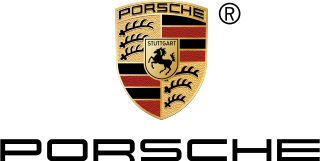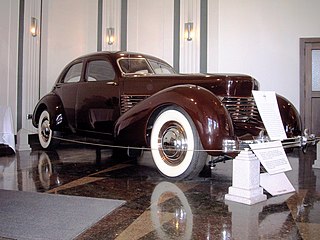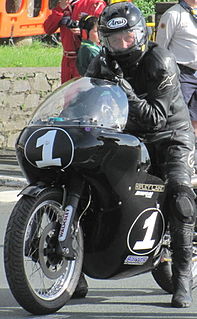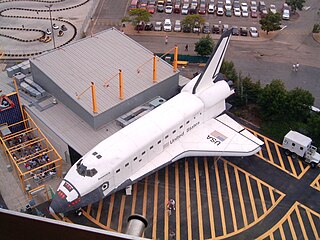
Dr.-Ing. h.c. F. Porsche AG, usually shortened to Porsche AG, is a German automobile manufacturer specializing in high-performance sports cars, SUVs and sedans. Porsche AG is headquartered in Stuttgart, and is owned by Volkswagen AG, which is itself majority-owned by Porsche Automobil Holding SE. Porsche's current lineup includes the 718 Boxster/Cayman, 911, Panamera, Macan and Cayenne.
The Amilcar was a French automobile manufactured from 1921 to 1940.

Anadol was Turkey's first domestic mass-production passenger vehicle, and the second Turkish car after the ill-fated Devrim sedan of 1961.

Gordon Miller Buehrig (B-yur-rig) was an automobile designer. Born in Mason City, Illinois, he had early design experience with Packard, General Motors and Stutz. In 1929, he was responsible for designing the bodies of the Stutz Black Hawks entered at Le Mans. At age 25 he became chief body designer for Duesenberg, where he designed the Model J. He joined the Auburn Automobile Company of Auburn, Indiana in 1934, producing the famous 1935 851 Boattail Speedster, based on the work of Alan Leamy. He also designed the distinctive Cord 810/812, the latter recognized for its originality by the Museum of Modern Art in 1951.

Checker Motors Corporation was a Kalamazoo, Michigan-based vehicle manufacturer and tier-one subcontractor that manufactured taxicabs used by Checker Taxi. Checker Motors Corporation was established by Morris Markin in 1922 through a merger of Commonwealth Motors and Markin Automobile Body.

The Peel Engineering Company was a manufacturing company based in Peel on the west coast of the Isle of Man that primarily made fibreglass boats through its subsidiary company West Marine Ltd. and fairings for motorcycles.

Automotive design is the process of developing the appearance, and to some extent the ergonomics, of motor vehicles, including automobiles, motorcycles, trucks, buses, coaches, and vans.

The early history of the automobile can be divided into a number of eras, based on the prevalent means of propulsion. Later periods were defined by trends in exterior styling, size, and utility preferences.

FAW Group Corporation is a Chinese state-owned automotive manufacturing company headquartered in Changchun, Jilin, China. Its principal products are automobiles; buses; light, medium, and heavy-duty trucks; and auto parts. FAW became China's first automobile manufacturer when it unveiled the nation's first domestically produced passenger car, the Hong Qi, in 1958.

Attica was a brand name of vehicles produced by Bioplastic S.A., a company created in Moschato, Athens by Georgios Dimitriadis, a figure in Greek automotive history.
Bulgaralpine was a sports automobile produced in Plovdiv, Bulgaria, and the result of a collaboration between Alpine and ETO Bulet. Production lasted for three years (1967–1969).

The automotive industry in China has been the largest in the world measured by automobile unit production since 2008. Since 2009, annual production of automobiles in China exceeds that of the European Union or that of the United States and Japan combined.
This article provides an overview of the automotive industry in countries around the world.
Bulgarrenault was an automobile produced in the city of Plovdiv, Bulgaria, and the result of a collaboration between Metalhim and Bulet. Production lasted for five years (1966-1970), during which the factory in Plovdiv produced two Renault models: the Renault 8 and the Renault 10.

The automotive industry in Japan is one of the most prominent and largest industries in the world. Japan has been in the top three of the countries with most cars manufactured since the 1960s, surpassing Germany. The automotive industry in Japan rapidly increased from the 1970s to the 1990s and in the 1980s and 1990s, overtook the U.S. as the production leader with up to 13 million cars per year manufactured and significant exports. After massive ramp-up by China in the 2000s and fluctuating U.S. output, Japan is currently the third largest automotive producer in the world with an annual production of 9.9 million automobiles in 2012. Japanese investments helped grow the auto industry in many countries throughout the last few decades.

Automotive industry in Ukraine was established during the Soviet times and until fall of the Soviet Union was an integral part of automotive industry of the Soviet Union. First Ukraine based motor vehicles brands were established in late 1950s.
Serbia's automotive industry is one of the most important industrial sectors and makes about 15% of industrial output of the country and 18% of all exports.

The automotive industry in Sweden is mainly associated with passenger car manufacturers Volvo Cars and Saab Automobile but Sweden is also home of two of the largest truck manufacturers in the world: Volvo AB and Scania AB. The automotive industry is heavily dependent on export as some 85 percent of the passenger cars and 95 percent of the heavy vehicles are sold outside of Sweden. The automotive industry and its sub-contractors is a major part of Swedish industry. In 2011 around 110,000 people were employed and the export income of 150 billion SEK accounted for 12 per cent of Sweden's export income. During 2009 128,738 passenger cars and 27,698 heavy vehicles were built in Sweden.

Ralf-Stetysz was the marque of one of the earliest Polish car manufacturers begun in France and transferred to Poland in the 1920s. It was formed in 1924, when Count Stefan Tyszkiewicz, an inventor and mechanical engineer, started a small automotive firm "Automobiles Ralf Stetysz" in Boulogne-Billancourt near Paris. The name was an acronym in Polish of the name "Rolniczo Automobilowo-Lotnicza Fabryka Stefana Tyszkiewicza" - "Agricultural-Automobile-Aero Factory of Stefan Tyszkiewicz").
Bulgaria's production strongly depended on auto imports from the Soviet block earlier and currently depends on other European and Asian countries. Presently, Bulgaria introduced its own domestic supercar company, SIN Cars.



















